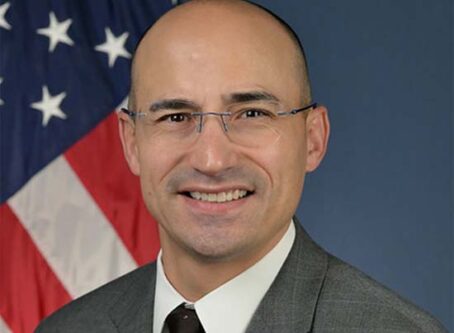FMCSA apprenticeship program application process opens today
Motor carriers interested in participating in the Federal Motor Carrier Safety Administration’s Safe Driver Apprenticeship Pilot Program can now apply for acceptance into the program.
FMCSA announced the creation of its apprenticeship pilot program in January 2022, as is required through the Infrastructure and Investment Jobs Acts.
On July 25, FMCSA held an informational webinar for those interested in participating and/or learning more about the program.
Who is eligible, what is required and a general overview of the program were part of the session.
Participants were also able to ask questions of officials with FMCSA and the U.S. Department of Labor who presented during the webinar.
OOIDA has opposed any measures to reduce the minimum interstate commercial driving age from 21 to 18, saying it would have a negative effect on safety.
In addition, the motivation for lowering the driving creation age is the assertion that there is a shortage of truck drivers, and OOIDA argues that there is no shortage.
The infrastructure bill authorized the three-year pilot program for 18-to-20-year-old drivers. Calling it a watered-down version of the DRIVE-Safe Act, OOIDA opposed the provision. However, the Association noted that the provision does strengthen trainer requirements and includes a study looking at driver compensation and its effect on safety.
Key requirements of the apprenticeship program
To participate in the program, an apprentice driver must be 18, 19 or 20 years old, have a commercial driver’s license, and be employed by an approved carrier.
The apprentice driver must complete two probationary periods with an experienced driver. That experienced driver must be at least 26 years old with five years of experience in interstate commerce and have no moving violations or preventable accidents in the past two years.
The first probationary period must include 120 hours on-duty, and at least 80 hours of driving, while the second covers 280 hours on duty and at least 160 hours of driving.
Apprentice drivers are prohibited from driving commercial vehicles with passengers, hazardous materials and special configurations. In addition, apprentices are not allowed to operate a commercial vehicle weighing more than 80,000 pounds.
Motor carrier requirements include, proper operating authority, minimum level of financial responsibility, a crash rate below the national average and no open enforcement actions in the previous six years to name a few.
Motor carriers must also be registered with the Department of Labor’s registered apprenticeship program.
A complete list of requirements is available on the FMCSA Safe Driver website.
Lastly, commercial vehicles driven by apprentices as part of the program must have an onboard monitoring system with forward-facing and in-cab-facing cameras, an automatic or automated manual transmission, and an active braking collision mitigation system, and must be governed at 65 mph at the pedal and under adaptive cruise.
Application process
FMCSA is now accepting online applications from motor carriers interested in participating in the apprenticeship program, which is set to run for a maximum of three years (through July 2025).
Part of that application process will include providing information on driver turnover as well as pay structure.
Before a motor carrier enrolls an apprentice driver in the program, they must enroll an experienced driver, said FMCSA.
The agency is seeking up to 1,000 motor carriers and 3,000 apprentices to participate in the program. Once the 3,000 number is met, future apprentices will be added as drivers age out or leave the program.
According to Nicole Michel, FMCSA program manager, office of research and registration, motor carriers can expect a 30-day review process once they have submitted their online application. That review period is subject to change.
Following approval, motor carriers will be required to attend a future webinar. This session will consist of only approved carriers and provide more specific information about participating in the program.
FMCSA Q&A session
How FMCSA will draw conclusions on safety was among the major questions posed.
“We want to make this program is as safe as possible and make sure it’s commiserate with the level of safety that’s currently on our roadways,” Michel said. “A lot of the technology required for apprentice drivers is very common in the industry today.”
Nikki McDavid, FMCSA division chief in the Office of Safety, said FMCSA has the authority to remove individuals or halt the pilot program if it determines safety measures are not being met.
Questions about grants, tax credits, recruitment and experienced driver screening also were fielded.
McDavid said there are no government funds available for employers participating in the program and no tax credits are in place to assist with the increased cost of insurance.
However, Jamie Bennett, program analyst for the U.S. Department of Labor, said employers should contact Fastport – the Labor Department’s transportation and logistics intermediary – to see what resources are available to them.
Recruitment of apprentice drivers will be up to the motor carrier.
Experienced drivers will be screened upon acceptance into the program by FMCSA. However, it will be up to the carrier to report any violations going forward. FMCSA will not be reviewing the drivers on a regular basis.
A list of accepted motor carriers will be available on the FMCSA website.
At this time there is no deadline to submit an application.
The entire FMCSA informational webinar is available here. LL









